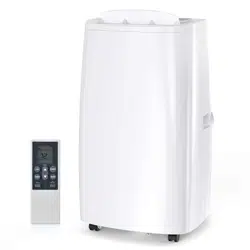Loading ...
Loading ...
Loading ...

3
Electronic leak detectors shall be used to detect flammable refrigerants, but the sensitivity may not be adequate, or may
need re-calibration (Detection equipment shall be calibrated in a refrigerant-free area). Ensure that the detector is not a
potential source of ignition and is suitable for the refrigerant used. Leak detection equipment shall be set at a percentage of
the LFL of the refrigerant and shall be calibrated to the refrigerant employed and the appropriate percentage of gas (25 %
maximum) is confirmed. Leak detection fluids are suitable for use with most refrigerants but the use of detergents
containing chlorine shall be avoided as the chlorine may react with the refrigerant and corrode the copper pipe-work. If a
leak is suspected, all naked flames shall be removed/extinguished. If a leak of refrigerant is found which requires brazing,
all of the refrigerants shall be recovered from the system, or isolated (by means of shut-off valves) in a part of the system
remote from the leak. Oxygen-free nitrogen (OFN) shall then be purged through the system both before and during the
brazing process.
When breaking into the refrigerant circuit to make repairs – or for any other purpose – conventional procedures shall be
used. However, it is important that best practice is followed since flammability is a consideration. The following procedure
shall be adhered to:
- remove refrigerant;
- purge the circuit with inert gas;
- evacuate;
- purge again with inert gas;
- open the circuit by cutting or brazing.
The refrigerant charge shall be recovered into the correct recovery cylinders. The system shall be “flushed” with OFN to
render the unit safe. This process may need to be repeated several times. Compressed air or oxygen shall not be used for
this task. Flushing shall be achieved by breaking the vacuum in the system with OFN and continuing to fill until the
working pressure is achieved, then venting to the atmosphere, and finally pulling down to a vacuum. This process shall be
repeated until no refrigerant is within the system. When the final OFN charge is used, the system shall be vented down to
atmospheric pressure to enable work to take place. This operation is absolutely vital if brazing operations on the pipe work
are to take place. Ensure that the outlet for the vacuum pump is not close to any ignition sources and there is ventilation
available.
In addition to conventional charging procedures, the following requirements shall be followed.
Ensure that contamination of different refrigerants does not occur when using charging equipment. Hoses or lines shall be
as short as possible to minimize the amount of refrigerant contained in them.
Cylinders shall be kept upright.
Ensure that the refrigeration system is earthed prior to charging the system with refrigerant.
Label the system when charging is complete (if not already).
Extreme care shall be taken not to overfill the refrigeration system.
Prior to recharging the system, it shall be pressure tested with OFN. The system shall be leak tested on completion of
charging but prior to commissioning. A follow-up leak test shall be carried out prior to leaving the site.
Before carrying out this procedure, it is essential that the technician is completely familiar with the equipment and all its
detail. It is recommended good practice that all refrigerants are recovered safely. Prior to the task being carried out, an oil
and refrigerant sample shall be taken in case analysis is required prior to the re-use of reclaimed refrigerant. It is essential
that electrical power is available before the task is commenced.
Become familiar with the equipment and its operation.
Isolate system electrically.
Before attempting the procedure ensure that:
--mechanical handling equipment is available, if required, for handling refrigerant cylinders;
--all personal protective equipment is available and being used correctly;
--the recovery process is supervised at all times by a competent person;
--recovery equipment and cylinders conform to the appropriate standards.
Pump down the refrigerant system, if possible.
If a vacuum is not possible, make a manifold so that refrigerant can be removed from various parts of the system.
Make sure that the cylinder is situated on the scales before recovery takes place.
Start the recovery machine and operate it in accordance with the manufacturer's instructions.
Do not overfill cylinders (No more than 80 % volume liquid charge).
Do not exceed the maximum working pressure of the cylinder, even temporarily.
When the cylinders have been filled correctly and the process completed, make sure that the cylinders and the equipment
are removed from the site promptly and all the isolation valves on the equipment are closed off.
Recovered refrigerant shall not be charged into another refrigeration system unless it has been cleaned and checked.
Equipment shall be labeled stating that it has been de-commissioned and emptied of refrigerant. The label shall be dated
and signed. Ensure that there are labels on the equipment stating the equipment contains flammable refrigerant.
When removing refrigerant from a system, either for servicing or decommissioning, it is recommended good practice that
all refrigerants are removed safely. When transferring refrigerant into cylinders, ensure that only appropriate refrigerant
recovery cylinders are employed. Ensure that the correct number of cylinders for holding the total system charge are
Loading ...
Loading ...
Loading ...
